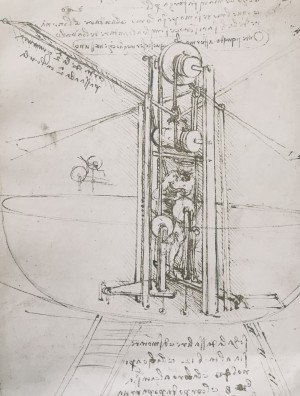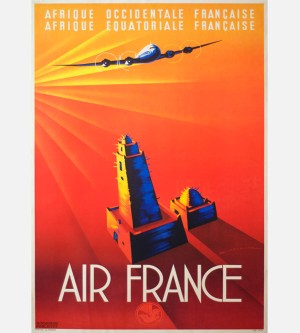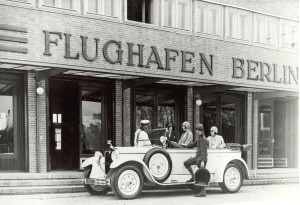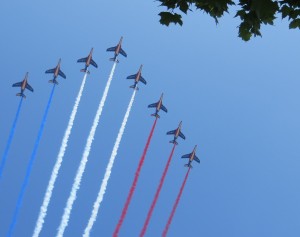Aviation as European Heritage
Before being a part of the European heritage – or the heritage of Europe –, aviation is itself the heritage of a dream. Only gods and other deities were able to fly, in classical Greece, Persia, Egypt or Babylon, or even in the early Christian iconography. Such a gift, related to an idea of absolute […]
Before being a part of the European heritage – or the heritage of Europe –, aviation is itself the heritage of a dream.
Only gods and other deities were able to fly, in classical Greece, Persia, Egypt or Babylon, or even in the early Christian iconography. Such a gift, related to an idea of absolute freedom, was a long desire before becoming a challenge; it was expressed in poetry and legends; thus, Daedalus and Icarus emerged in literature, followed by a figure as tragic, Phaeton, teaching one lesson: flying is for the bold, but also for the wise. Courage had to be pondered by knowledge.
Aviation in time
Aviation historiography is fairly abundant; yet, today’s historians avoid that oversimplification that led in past times to a distorted vision of what has been a continuous effort to achieve one of Humanity’s greatest dreams[i]. “The quest for flight involved far more than the drive to build the first airplane”, Richard Hallion wrote[ii]. By the Middle Ages, humanity had a significant understanding of how air and winds can be mastered via kites, windmills, sails, ventilation turbines or by observing the helicopter seeds of ash trees, sycamore or maple trees. Academic debates and solitary studies pondered the nature of winds, clouds and atmosphere; manuscripts and paintings are numerous to prove research[iii], depicting flying vehicles or the act of flying. Leonardo Da Vinci’s drawings and plans for a parachute, mechanical wings and the first helicopter are by far the most famous confirmation of a scientific and systematic approach of flight.

Leonardo Da Vinci’s study for a flying machine. Anastatic reprint of the original. Collection of the author.Balloon concepts appeared in the 17th-18th centuries in Italy and France; the next 150 years would see them applied to both science and war, but also entertainment. The 19th century brought development to the shape that was going to define today’s airplane; “more detailed work thereafter, principally in England, France and Germany, culminated in the glider experiments of the 1890s”[iv] and the early 1900s. The American contribution brilliantly added to the previous work, integrating advice and information, relying on French and German sources. Using the designs of Louis Blériot, Henry Farman and Léon Levavasseur, France was already in the lead by 1906; Britain took further the Blériot blueprints with Frederick Page, Geoffrey de Havilland and A.V. Roe[v], while the Wright brothers – highly trained, meticulous, gifted engineers, emphasizing on the controllability of the flight –, managed to synthesize various technologies and integrate them into a successful ensemble with a definitive impact on aircraft building. One can say that the first modern plane capable of a powered, controlled flight on long distances, was a joint invention of the North Atlantic world.
By the 1910s, European aviation moved into the era of the streamlined monoplane and biplane[vi], with aircrafts reaching 160 km/h. In Russia, Igor Sikorsky launched a four-engine multi-bay biplane with cabins and storage space[vii], while Romnanian Henri Coandă designed a proto-jet engine that, with subsequent British, Italian and German contributions, was going to change the world aviation from the 1930s on. Systematic, with better ideas and a purposeful national leadership, the European aviation literally raced past the United States.
First World War gave a new dimension to aviation: the military. Airplanes were integral to the arms race prior to the war, a topic already discussed in the military circles. By the summer of 1914, Europe’s armies had been exercising military airplanes during annual maneuvers, while the Italian and the Romanian armies made actual use of their aerial fleet during conflicts preceding the Great War[viii]. For a while, the growing air force of the European countries and of the United States had no clear doctrine of power, but as conflict intensified, it became clear that the plane would become crucial for reconnaissance, survey and bombardment[ix]; the battles of Tannenberg (1914) or the first battle of Marne (1914) demonstrated it from the very start. Land and sea based air attack, air defense, air observation and air superiority were intrinsic to military operations, and such, in less than 10 years of its creation, the military airplane demonstrated its power to transform battles and strategy, and influence the war’s outcome. By 1918-1919, the air assistance was well-established and paired with the land armies and the navy. Great Britain instituted the world’s first autonomous air division of the national defense: the Royal Air Force.

Art Déco promotion poster for traveling with Air France, 1930s. Public domain.

Martinsyde biplane, 80 HP Gnome rotary engine, First World War. Collections of the Imperial War Museum, public domain.During the interwar period, aviation grew exponentially, both the civilian and the military[x]. It was its “second age”[xi] and it came with the use of aluminum, the elegance of the zeppelins, de Havilland’s retractable wheels, landing flaps, the first jet engines and the turbopropellers. The Atlantic was crossed, the first commercial airlines were created, and names like Lindbergh or Howard Hughes became as familiar as the Hollywood stars.
In 40 years only, technology skyrocketed from the fragility of the 1920s to bold, supersonic flight of 1947, the graceful Concorde of 1969 and the overwhelming rockets used to land on the moon. Benefitting the expertise of the 1950s, the communications boom of the late 1970s, intensified in the 1990s, is tributary to aeronautics. From the 1930s on, aviation increasingly played a role in the daily life of millions of individuals who use commercial airlines to travel; they define, since the 1990s, a part of the contemporary European life, impossible to dissociate from one of the Four Liberties of the European Single Market: the freedom of movement. Travel bringing knowledge and discovery is based on aviation. Business is facilitated not only in the aircraft industry (both civilian and military, as the latter is a reflection of the power status of a country), but also in related fields, such as tourism.
Heritigization of aviation
From a strict administrative point of view, aeronautical patrimony is defined by law[xii]. It comprises the entirety of material and non-material goods acquired or fabricated by the aircraft industry and pertaining to the public domain: national airspace destined for the conventional traffic; airfields, airport areas (restricted and open to public); services (navigation, assistance); equipment and infrastructure built by the State or in franchise; the air register; and the flight agreements concluded.
Yet, unless integrated in a larger cultural frame, these elements might be little relevant to the heritage specialists or enthusiasts. Just like other forms of heritage, aviation heritage has characteristics that identify specific artefacts, locations or experiences as manifestations of this heritage. Because of it, heritage related to aviation can be categorized into several different areas according to the Turnbridge-Ashworth scheme[xiii], and while grouping can have a certain fluidity, it can still act a as a suitable starting point:

Entrance to the Tempelhof Airport in the early 1930s. Archives of the Berlin Airport. Public domain(1) Tangible immovable heritage can refer to spaces with particular relevance to the aviation past. They constitute physical structures such as reputed airports (either for being among the first constructed with a specific design, or part of a historical narrative of importance); such are the iconic Croydon near London[xiv], Le Bourget near Paris[xv] or Tempelhof[xvi] in Berlin, all sharing a common image of the 1920s glamour. Airport buildings such as the abovementioned – with architectural features of a specific epoch or style – become recognizable as heritage as such[xvii], aside their significance to aviation. Sites where aviation originated also fit into this category, even if there is a strong competition between places, cities, countries and nationalities in being recognized as leader in the history of aviation[xviii].
(2) Tangible movable aviation heritage refers to objects, articles and tangible experiences that are not “spatially rooted”. The best examples are the aviation museums and galleries, where the displays of artefacts (less than the museum building itself) are the source of heritage. They can be transported and transferred for special exhibitions or museums relocations. Events involving the use of aircrafts considered part of the aviation patrimony are more important from this point of view than their location per se, and are thus a part of the tangible movable elements of the aviation heritage.
(3) Intangible aviation heritage refers to specific traditions related to flight, to knowledge and information transmitted, memories derived from civil or military activities, traditions[xix] and ceremonies[xx], and other forms of impalpable heritage associated with aviation. There is a possibility of both immovable and movable forms of intangible aviation heritage, for instance formalities or customs and practices associated with particular spatially rooted locations[xxi].
And last but not least,

Paris Air Show. CC0 Public Domain, free for personal and commercial use, no attribution required. 4) Goods and services closely connected to commercial activities (such as miniature reproductions of airplanes, retro designed or modern equipment, printings of Art Déco and 1960s posters, or travel services with a heritage element (e.g. demonstration flights in first or second generation aircrafts).
Such are the multiple facets of aviation heritage, reflecting its ambivalent nature: technological, but also cultural. Flight is a historical achievement born of the attitudes, the technological outlook and the many accomplishments of a European-rooted culture (including the USA), exploratory and optimistic, displaying increased mastery over nature through complex machines and equipment. It is also an achievement that demanded rigorous mathematical, physical and chemical analysis, keen insight, hard work, and physical courage: the sum of which generated a story of conquest and triumph, of drama and tragedy, still enchanting.
Radu Albu-Comănescu
Bibliography
“Croydon Airport”, official website of the County of Sutton, https://www.sutton.gov.uk/info/200168/libraries_and_culture/1361/croydon_airport
Almond, Peter, Aviation: The Early Years, Rheinbreitbach, H.F.Ullmann Publishing Gmbh, 2011, 352 p.
Brady, Tim (dir.), The American Aviation Experience: A History, Southern Illinois University Press, 2000, 462 p.
Dobson, Alan, A History of International Civil Aviation: From its Origins through Transformative Evolution, London, Routledge, 2017, 146 p.
Forsang, Philip and Ndikum, Serge-Delors, Encyclopaedia of International Aviation Law, Recueil de textes relatifs à l’aviation civile, Bloomington, Trafford Publishing, 2013, 1180 p.
Gordon, Arthur, American Heritage History of Flight, New Word City (digital publishers), 2015
Hallion, Richard, Taking Flight: Inventing the Aerial Age, from Antiquity Through the First World War, Oxford – New York, Oxford University Press, 2003, 531 p.
Historic England, “Listed Buildings Online: Former Lodge To Croydon Airport Terminal”, https://historicengland.org.uk/listing/the-list/list-entry/1079299
Musée de l’Air et de l’Espace du Bourget, http://www.museeairespace.fr/
O’Dwyer, William (Maj., USAF Reserve, Ret.) “The ‘Who Flew First’ Debate”, Flight Journal, October 1998, online, https://www.flightjournal.com/wp-content/uploads/2013/03/whitehead.pdf?fa667f
Pontifical Council for the Pastoral Care of Migrants and Itinerant People, Protectress of Civil Aviation, online: http://www.vatican.va/roman_curia/pontifical_councils/migrants/documents/rc_pc_migrants_doc_20000601_avci_santi_en.html
Rustam-Bek-Tageev, Boris, Aerial Russia. The Romance of the Giant Aeroplane, London/New York, John Lane Co., 1916, 154 p.
Sandachi, George Paul and Hadîrcă, Dan, Prinţul George Valentin Bibescu. Biografia unui călător [Prince George Valentin Bibescu. The biography of a voyager], Bucharest, Vivaldi, 2005, 320 p.
Tunbridge, John E. and Ashworth, G.J., Dissonant Heritage: The Management of the Past as a Resource in Conflict, London (New York, Hoboken), John Wiley & Sons, 1996, 299 p.
[i] The main thesis of such a vulgate focuses on the lack of significant development in aviation from Antiquity to late 19th century, blaming the anti-scientific spirit of the Catholic Church while underlining the more positive approach of the Islamic, Chinese and Mongol-Hindu societies. In addition, placing the Wright brothers on the position of leading inventors, the thesis disconnects them from researches carried out by Europe’s scientific community, and considers the latter to be merely imitating the American achievements, with some embellishments. Ergo, the aviation developed in Europe is tributary to the American and rose to prominence only after the demise of Wilbur Wright. Airplanes were not seriously considered for military exploitation, and when this occurred during the First World War, they had little influence on the general outcome (Hallion, R., ut infra, pp. xiv-xv).
[ii] Hallion, Richard, Taking Flight: Inventing the Aerial Age, from Antiquity Through the First World War, Oxford – New York, Oxford University Press, 2003, 531 p.
[iii] Brady, Tim (dir.), The American Aviation Experience: A History, Southern Illinois University Press, 2000, 462 p.; see chapter 1 (“The Ancients”, pp. 1-13), and chapter 2 (“Developments before the Wright Brothers”, pp. 14-48), well documented and richly illustrated.
[iv] Hallion, R., op. cit., p. xvi.
[v] Gordon, Arthur, American Heritage History of Flight, CreateSpace Independent Publishing Platform/New Word City (digital publishers), 2015, 460 p., passim.
[vi] In the meanwhile, “the American government dithered over its role (if any) in supporting aviation research and industry, [while] an enervating patent suit increasingly dominated American aviation”. The US refined therefore the Wright design, but did not advance (Hallion, R. op. cit. p. xviii).
[vii] Rustam-Bek-Tageev, Boris, Aerial Russia. The Romance of the Giant Aeroplane, London/New York, John Lane Co., 1916, pp. 87-98.
[viii] In 1911, Italy sent an air expeditionary force to Tripoli, in Libya, part of the Ottoman empire, that “bombed, reconnoitered, and spotted for naval and army gunfire support” (ibidem, p. xix). In 1912, during the Romanian-Bulgarian episode of the Second Balkan War, planes belonging to the Romanian aviation were used for patrolling and surveillance against the enemy Bulgarian positions (cf. Sandachi, George Paul and Hadîrcă, Dan, Prinţul George Valentin Bibescu. Biografia unui călător [Prince George Valentin Bibescu. The biography of a voyager], Bucharest, Vivaldi, 2005, 320 p.)
[ix] Morris, Craig, “Aircraft, Reconnaissance and Bomber” in 1914-1918 online International Encyclopedia of the First World War, edited by Ute, Daniel, Gatrell Peter, Janz Oliver, Jones Heather, Keene Jennifer, Kramer Alan, and Nasson Bill, Freie Universität Berlin, Berlin (July 14, 2016), accessed on June 5, 2018, online at https://encyclopedia.1914-1918-online.net/pdf/1914-1918-Online-aircraft_reconnaissance_and_bomber-2016-07-14.pdf
[x] The transformation of the civilian aviation was to come, as the 1920s and the 1930s saw the rise of the Fédération aéronautique internationale / World Air Federation, who played a political a role that was never replicated ever since. Created in 1905 by prince Roland Bonaparte and initially dedicated to air sports, WAF became a platform reuniting – aside devotees –, the Ministries of Air or Aviation of the member countries. Such ministries included the civil and the military aviation administration. WAF consisted of 30-40 air clubs with diplomatic, strategic and military potential, as most of the national delegates had political or military ranking and were connected to the aircraft manufacturers in their countries (Blériot, Potez, Zodiac, Fokker, Vickers, Rolls-Royce, Fiat, Hispano-Suiza, etc.), and the decisions taken were often politically influenced. It was during the 1930-1941 presidential mandate of prince George III Bibesco (Romania) that the institution involved in the regulation of the commercial aviation, exploring and opening new airways to connect European countries, colonial empires, Asia and the Americas, facilitating air travel. WAF acquired the right to regulate tourist passports, reduce and harmonize airport taxes, reduce the number of no-flight areas, introduce special regulations for the Red Cross planes, free passes for sporting pilots, permission to install telegraphs in airports, permission for pilots to unrestrictedly use the airplane’s radio stations in order to communicate, etc. A permanent office to the League of Nations was created in order to deal with air jurisdiction, commercial and leisure travel. (cf. Sandachi and Harârcă, op. cit., pp. 164-170, 187-232). ― For other considerations with regard to the interwar period aviation, Dobson, Alan, A History of International Civil Aviation: From its Origins through Transformative Evolution, London, Routledge, 2017, pp. 17-36.
[xi] Almond, Peter, Aviation: The Early Years, Rheinbreitbach, H. F. Ullmann Publishing Gmbh, 2011, 352 p. (see chapter 6, pp. 226-264).
[xii] Forsang, Philip and Ndikum, Serge-Delors, Encyclopaedia of International Aviation Law, Recueil de textes relatifs à l’aviation civile, Bloomington, Trafford Publishing, 2013, p. 114
[xiii] For simplification purposes, we shall use the categories suggested by Tunbridge, John E. and Ashworth, G.J., in their book Dissonant Heritage: The Management of the Past as a Resource in Conflict, London (New York, Hoboken), John Wiley & Sons, 1996, 299 p. Heritage is tangible immovable (landscape and buildings, archaeological sites.); tangible movable (objects, events, artefacts); intangible (memories, rituals, language, music); and goods & services.
[xiv] “Croydon Airport”, the official website of the County of Sutton, accessed on June 7, 2018, online at: https://www.sutton.gov.uk/info/200168/libraries_and_culture/1361/croydon_airport
[xv] Today used mostly for business and private jet operations.
[xvi] Transformed into an open-space and park area since 2008.
[xvii] Croydon Airport, “Listed Buildings Online: Former Lodge To Croydon Airport Terminal », Historic England, accessed June 7, 2018, online at https://historicengland.org.uk/listing/the-list/list-entry/1079299. Le Bourget hosts since 1975 the Musée de l’air et de l’espace, France’s national aviation museum (http://www.museeairespace.fr/), as well as air shows, mainly the Paris Air Show; in addition, the main hall is a listed Art Déco building. Tempelhof’s celebrity is mostly related to the Berlin Airlift of 1948-49, during the West Berlin Crisis.
[xviii] Objectively, chronologically, the countries involved in the development of modern aviation were Germany, France, the United States, Romania, Brazil and Russia, in the last decade of the 19th century and the first of the 20th. Both Romania and Brazil are represented by engineers and operators who studied in French schools and lived in France. In addition, see O’Dwyer, William (Maj., USAF Reserve, Ret.) “The ‘Who Flew First’ Debate”, Flight Journal, October 1998, pp. 22-23, 50-55 [online at https://www.flightjournal.com/wp-content/uploads/2013/03/whitehead.pdf?fa667f, accessed June 8, 2018].
[xix] For instance those related to a patron saint, such as St George for the Romanian aviation, St. Thérèse of Lisieux, St. Joseph of Cupertino and Our Lady of Loreto (approved by Pope Benedict XV in 1920, cf. Pontifical Council for the Pastoral Care of Migrants and Itinerant People, Protectress of Civil Aviation, accessed June 9, 2018, online at: http://www.vatican.va/roman_curia/pontifical_councils/migrants/documents/rc_pc_migrants_doc_20000601_avci_santi_en.html ).
[xx] E.g. the baptism or the naming ceremony of a new airplane; the informal rituals of the flight schools, etc.
[xxi] Water baptism of a retiring airship captain; cutting the shirt after the first solo flight, etc. The water salute was extended to honor military veterans, foreign dignitaries and new airline service; it involves two firefighting rigs spraying arcs of water over a plane at arrival or before a departing flight, in sign of respect, honour and gratitude.


 Université Jean Monnet
Université Jean Monnet